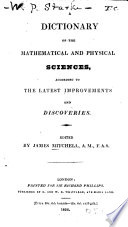 | John Ewing - 1809 - 672 pages
...into time, gives the other part. Then the sum or difference of these will give the whole equation. A solar day is the interval between two successive transits of the sun over the meridian, which is always more than a revolution of the earth on its axis, and at a mean rate is measured... | |
 | James Mitchell - 1823 - 666 pages
...determined. DATUM, the singular of data. DAY, in Astronomy t is that portion of time which elapses between two successive transits of the sun over the same meridian ; and the hours are counted from one period to another, from one to twentyfour. Mean Solar DAY. The solar... | |
 | Edward Riddle - 1824 - 572 pages
...sidereal day is the interval between two successive transits of a fixed star; and a solar or an apparent day is the interval between two successive transits of the sun over any meridian. The sidereal day commences when the first point of Aries is on the meridian, and the... | |
 | Edward Charles Frome - 1840 - 232 pages
...the co-latitude of the place. The natural standards of the measurement of time are the tropical yew and the solar day, and these are in a manner forced...varying; so that, although it is the only solar time which can be verified by observation,\i is quite unfit for application to general use. The mean solar... | |
 | Harvey Goodwin - 1846 - 500 pages
...on its axis. Sidereal hours are those marked by the sidereal clock already described. (Art. 28.) The solar day is the interval between two successive transits of the sun, and is therefore not of constant length ; hence, although the beginning of this day is marked by a... | |
 | Olinthus Gilbert Gregory - 1848 - 572 pages
...Common Year. Leap Year. Julian Year. Solar Year. Sidereal Year. A solar day is the time that elapses between two successive transits of the sun over the same meridian, and is not alwavs of equal duration, being longer at some seasons of the vear than at others; the difference... | |
 | H. W. Jeans - 1853 - 314 pages
...first point of Aries over the same meridian. It begins when that point of Aries is on the meridian. The apparent solar day is the interval between two successive transits of the sun's centre over the same meridian. It begins when that point is on the meridian. * According to Bessel... | |
 | H. W. Jeans - 1858 - 314 pages
...first point of Aries over the same meridian. It begins when that point of Aries is on the meridian. The apparent solar day is the interval between two successive transits of the sun's centre over the same meridian. It begins when that point is on the meridian. * According to Bessel... | |
 | William Schmolz - 1859 - 196 pages
...Time. — Solar Time is measured by the daily motion of the sun. A Solar Day is the interval of time between two successive transits of the sun over the same meridian ; and the hour angle of the sun is called Solar Time, This is the most natural and direct measure of time.... | |
 | John William Colenso (bp. of Natal.) - 1864 - 238 pages
...i pt, congius = 6 serf. = 3 qts., modius = 2 gals., urna — 8 gals., amphora=.6 gals. A (SWor J)ay is the interval between two successive transits of the Sun over the meridian of any place ; but, from several causes, this interval is continually varying, though slightly,... | |
| |